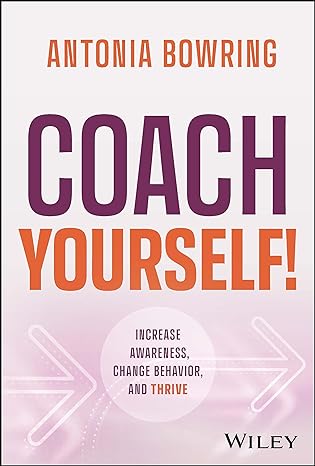This four-point framework can help ensure your message is received and retained

Health and safety professionals must have tough conversations with both the workers for which they are responsible, as well as the C-suite executives who they report to. Executive coach, Antonia Bowring, offers key strategies for having these challenging talks in a new book titled ‘Coach Yourself!: Increase Awareness, Change Behavior, and Thrive.’
"We all have critical conversations, and most of us avoid them,” explains Bowring, who is Vancouver woman working in the United States. She wrote the book to democratize executive coaching and make its benefits accessible to a broader audience. One of the book's key sections focuses on critical conversations, and Bowring introduced a framework she refers to as "coin" to assist individuals in having productive discussions, even in challenging situations.

“This is like a super simple checklist that you can keep in your back pocket,” explains Bowring. “If you get into a conversation that goes off track, or you feel a bit lost, you can easily visualize this checklist in your mind."
The "coin" framework comprises two parts: preparation and execution. In the preparation phase, Bowring stressed the importance of balancing empathy (heart) and clarity (backbone) in approaching critical conversations. Understanding one's natural communication style is crucial to adapt appropriately.
When it comes to the actual conversation, Bowring highlighted four key elements:
- Common purpose: Start by finding common ground and shared objectives. This creates a foundation for a fruitful conversation.
- Observation: Present facts and data without judgment. Stick to the observable aspects of the situation.
- Inquiry: Engage in active listening and ask open-ended questions. Encourage the other party to share their perspective and feelings.
- Next Steps: Always conclude the conversation with a concrete plan or agreement on what comes next.
While Bowring wrote the book for all types of leaders, the conversations health and safety professionals have are often some of the most serious, involving issues of life and death. Bowring urges safety professionals to be aware of their natural communication style and find a balance between assertiveness and empathy.
"When dealing with matters of life and death, you need to be clear and definitive,” suggests Bowring. “However, people won't truly hear you if they don't feel a sense of connection and trust. Remember to integrate both heart and backbone into your approach."
Regarding defensive or confrontational situations, Bowring recommends defusing defensiveness through active listening and open-ended questions. She suggests starting with questions like, "Tell me from your perspective" and "Can you tell me more?" to encourage dialogue and exploration. Checking in with the other person and ensuring mutual understanding can help lead to agreeable next steps.
Bowring emphasized the practicality of the "coin" framework, encouraging health and safety professionals to think of it as a tool for navigating critical conversations effectively. "More than anything, having this coin in your back pocket can help you think about where you want to take the conversation when things get off track."
As you address critical health and safety issues in the workplace, remember the right communication strategies can be the difference between the message being received and retained and it being easily cast aside or forgotten.





